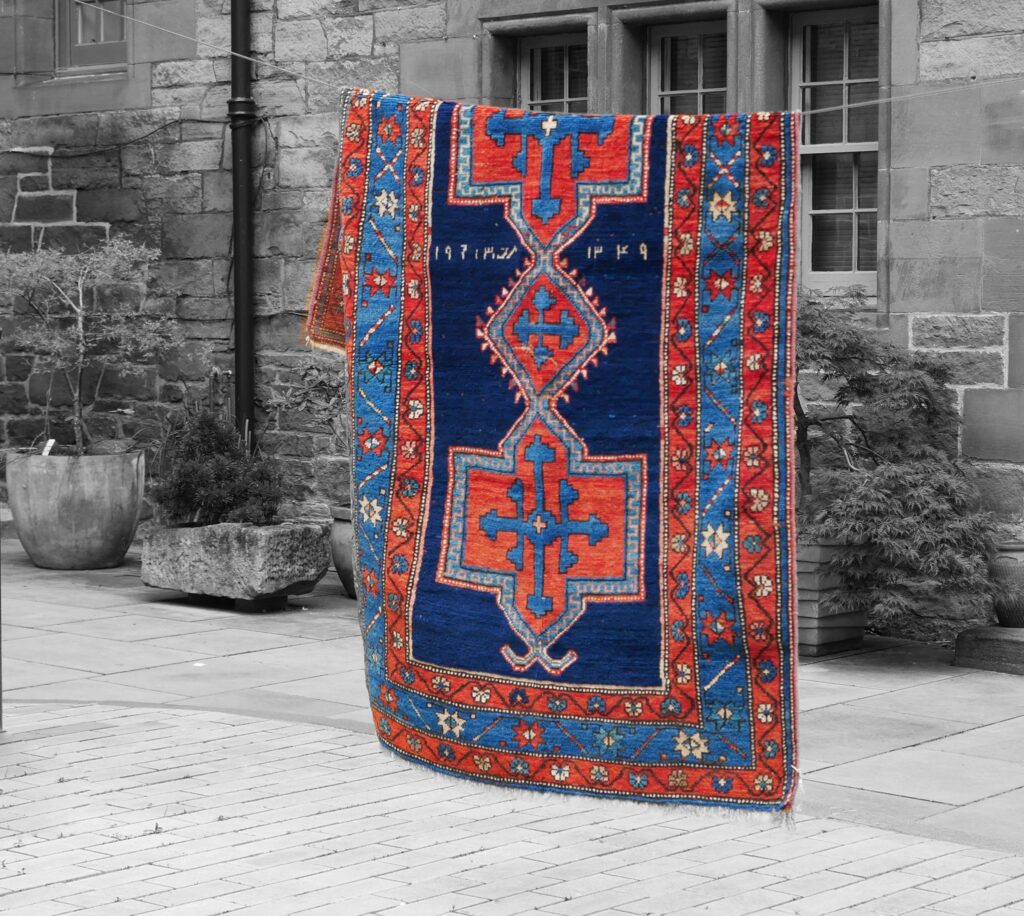
It is argued that most Caucasian rugs that appeared on the Western market at the beginning of the 20th century, were produced circa 1880.
It is however but an arbitrary date. It is not sure when exactly the regional cottage industry took root in this isolated and relatively inaccessible area, and there are very few rugs to be found predating the 1880s; yet many merchants insist that the 1880s were the apex of the industry that always existed in the Caucasus.
Possibly, , in fact, with Russia’s ambitious plansof revitalizing the newly annexed territories (1860s), the moribund industry of the Persian Kajars khanates, enjoyed its own glorious period of Renaissance.
This would in some way explain this meteoric phonemonon, the short-lived and yet so fascinating rug production of the turn-of the-20th-century Caucasus.
The origins of this phenomenion are as mysterious as its end; the dearth of early 20th century may suggest that such rugs were no longer produced.
It also argued that the decline or perhaps the end of the Caucasian phenomenon was brought about by
a) the demand for larger format rugs on the US market (Raul Tschebull)
b) the outbreak of WWI (Yuka Kadoi)
c) the Bolshevic revolution.
Some evidence however suggests that the production of good quality rugs continued in the Caucasus long after the Soviet October revolution of the 1917 while there is still not enough evidence suggesting solid weaving tradition in the popular Caucasian 19th c. rugs style predating the 1880s.

Ironically, while the ever-dexterous merchants continually unearth greater numbers of the so-called ‘earlier pieces’ that is those going back as far as the beginning or middle of the 19th century, the early 20th century Caucasian rugs whose production is well documented (read William Dunbar HALI issue 204) seem to have completely disappear.
Piotr Wesolowski
Note: 1,2,3 are Arabic numeral which we adopted to replace Roman numbers I,II, III, etc
The Arabs, on the other hand, whose trade with the Subcontinent was always of great economic importance, adopted the Indian numerals ١,٢,٣,٤,٥.١٠ which, unlike any other Arabic texts, are are read from the left to the right.
